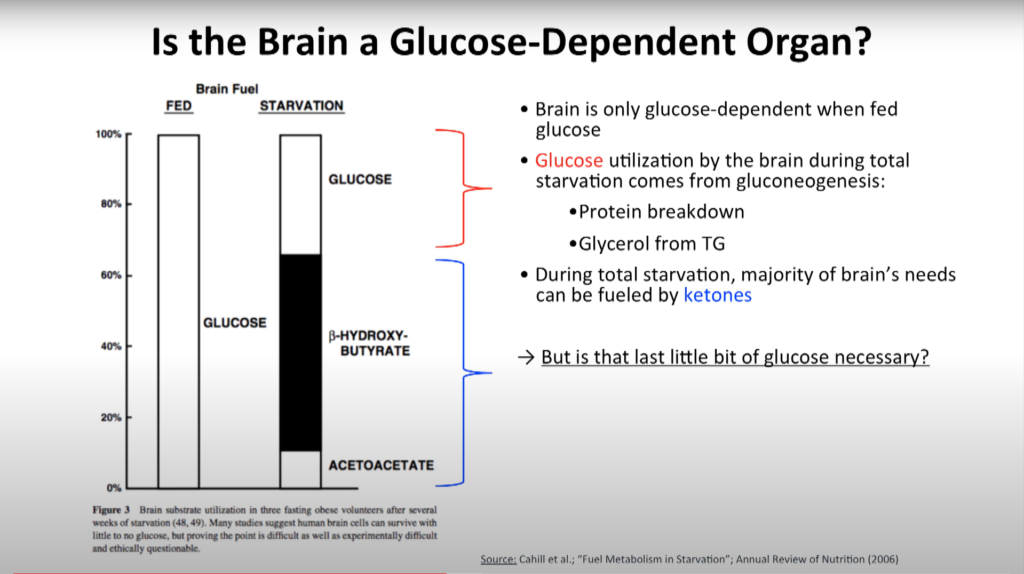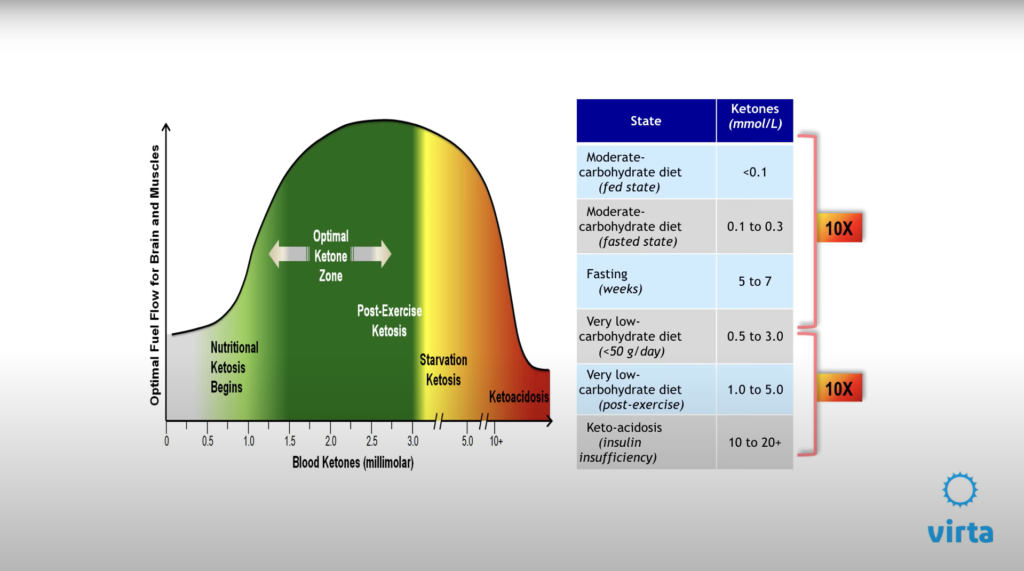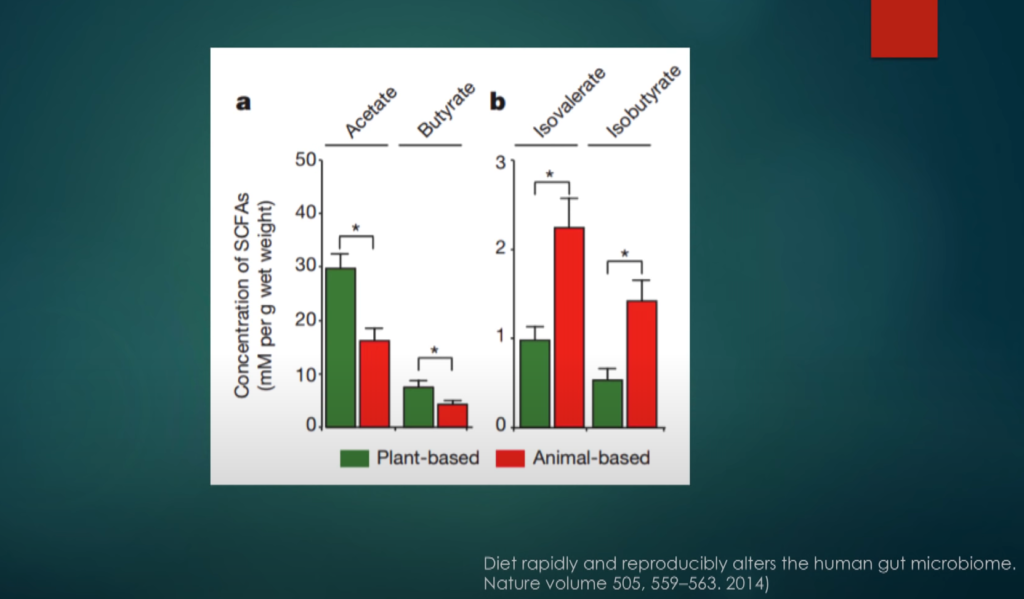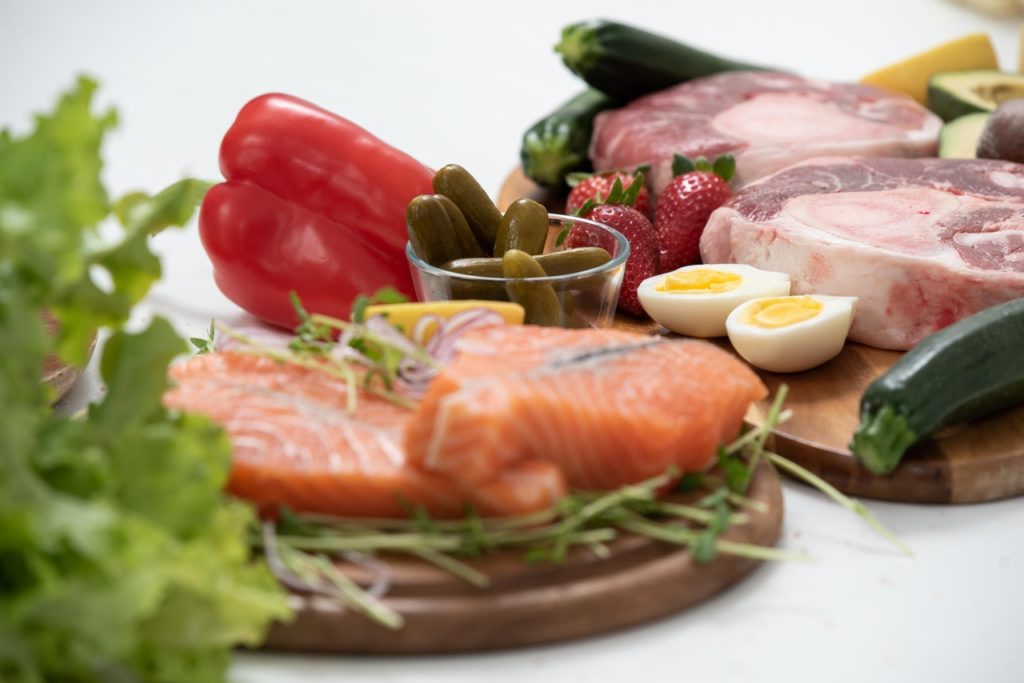Ketones are metabolites formed from the breakdown of fats. These are produced in the liver and only occurs when insulin levels are low enough. Consequently, many people use fasting as a means of getting into a state of ketosis, liberating energy from bodily fat stores. However, ketosis can also be achieved by eating a low-carb diet of 50g/day or less.

Conventional medical wisdom states that the brain runs on glucose 120g/day, but that’s on a high carb diet. On a low carb diet the requirement becomes 25g/day which is supplied by the liver with ease from the glycerol backbone of fat.

During the fasted state, ketones comprise 2/3 of the energy expenditure of the brain.
Interesting experiment: People who were in starvation ketosis were injected with insulin to lower blood sugar levels, but they did not demonstrate any negative effects, which indicated that the body functions perfectly well on ketones even with drastically lowered blood sugars.
There are no essential carbohydrates. The idea that we need 120g of carbs/day for our brains is a myth that refuses to die.

Metabolic efficiency
Ketones burn oxygen more efficiently in the mitochondria and produce less ROS(reactive oxygen species). What this translates to, as many of you would know, the powerhouses of the cell produce more ATP(energy units) per oxygen molecule AND produces less waste. So using keto is quite like the solar or electric to the gas or petroleum of carbs.
Signaling
Not only do ketones serve as a fuel source, they also have signaling properties.
-Ketones increase levels of BDNF(brain derived neurotropic factor) which helps to grow and maintain neurons.
-Ketones reduce oxidative stress and inflammation by inhibiting certain inflammation signaling pathways within the cell.
–Ketone bodies also influence epigenetic markers, which is to say that they regulate the activation of genes.
Gut health
The cells that line the gut prefer short-chain fatty acids as fuel, specifically ketones. These two explain.

What do I do now?
Eat foods low in carbohydrate content, keeping it to 50g/day or less. Eat more fats, particularly from animal sources, providing good saturated fats. That way you will be satiated for much longer and not feel hungry so often. The transition takes roughly 3-6 weeks and one common complaint is experiencing what people commonly call “ketoflu”. To prevent it, you have to ingest more salt(3-5g/day) to make up for the increased loss of electrolytes that occurs after lowering insulin levels.
TL;DR
Ketones are a metabolite of fat that supply energy to the body. Although most live with the notion that we need to consume carbs in order to live, that has been clearly demonstrated to be false. In fact, ketones are arguably the preferred energy substrate for the body considering the plethora of beneficial health properties and for its superior energy efficiency.
Other resources:
–The science of ketosis and the keto flu
–AHS12 Nora Gedgaudas—The ‘Holy Grail’ of Primal Health: Benefits of a Fat-Based Caloric Intake
–AHS17 The Central Role of Dietary Fat in Forging the Human Brain – Nora Gedgaudas
–Dr. Stephen Phinney – ‘Recent Developments in LCHF and Nutritional Ketosis’ (Part 1)
-Dr. Stephen Phinney – ‘Recent Developments in LCHF and Nutritional Ketosis’ (Part 2)
-Dr. Stephen Phinney – ‘Inflammation, Nutritional Ketosis and Metabolic Disease’
-Dr. Stephen Phinney on Nutritional Ketosis and Ketogenic Diets (Part 1)
-Dr. Stephen Phinney on the Safety and Benefits of a Ketogenic Diet (Part 2)
-Dr. Stephen Phinney on Problem Solving a Ketogenic Diet (Part 3)
Papers:
